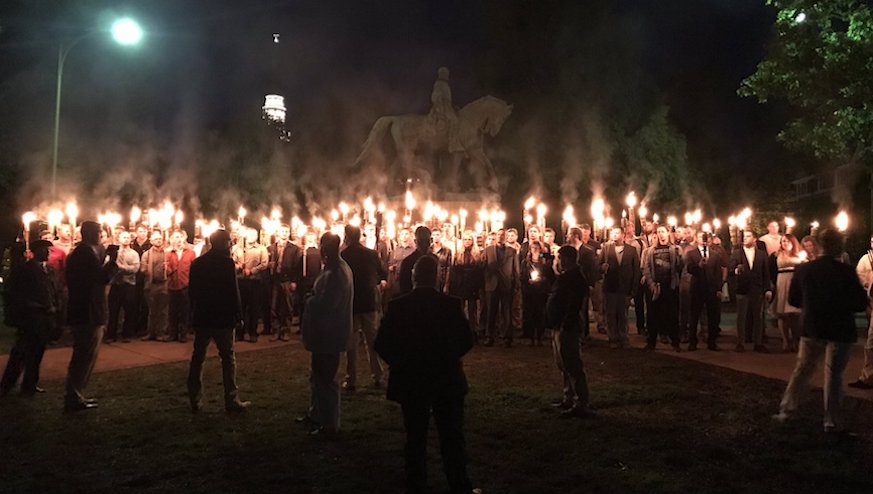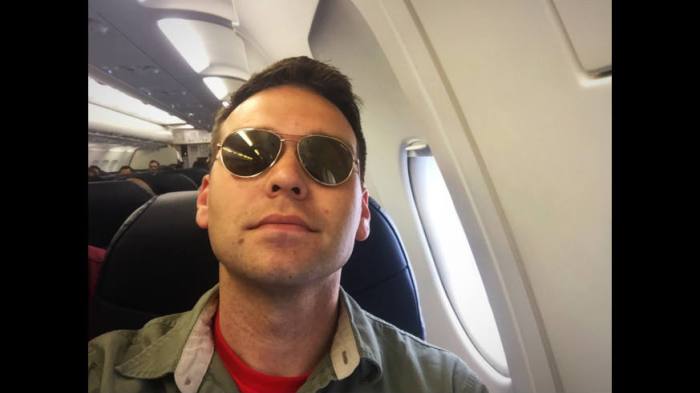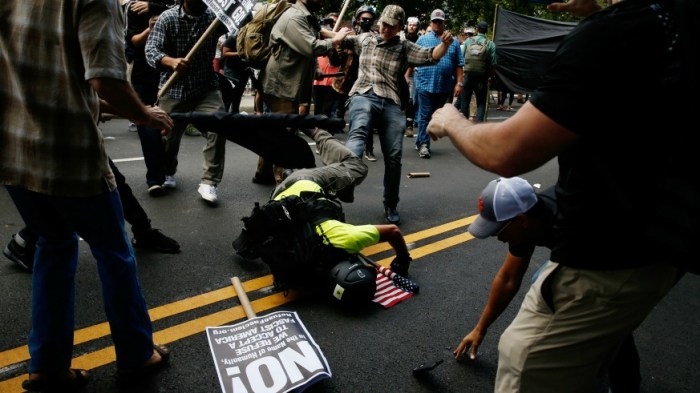It’s been one year since the 2017 Charlottesville Rally in which a group of torch-wielding white supremacists marched through the Virginia city. In the year since, white supremacist propaganda efforts have increased across the country, according to the Anti-Defamation League.
The Anti-Defamation League on Thursday launched the ADL H.E.A.T. map, or the Hate, Extremism, Anti-Semitism and Terrorism map, to detail just how widespread these actions have become in the year after Charlottesville.
The ADL, which is headquartered in New York City, called this a “first-of-a-kind interactive detailing extremist and anti-Semitic incidents” in the United States.
“It’s important to remember that extremist activity is not just confined to a historic town in Virginia, but rather an issue faced by communities every day across the country,” said ADL CEO and National Director Jonathan Greenblatt in a statement. “As extremists continue to spread hate and incite violence using any and all means that they can, ADL is committed to exposing their efforts and fighting to prevent the hate they aim to spread.”
ADL H.E.A.T. Map: White Supremacist Propaganda
In 2017 and 2018 alone, there were 3,023 incidents of extremism or anti-Semitism across the country, according to the ADL.
Something notable in the year since the Charlottesville Rally, the organization said, is that white supremacist propaganda, on and off college campuses, has increased.
The 2017-18 school year saw a 77 percent increase of incidents on campus from the previous academic year, per the ADL, with 292 cases reported compared to 165 in 2016-2017.
Since the beginning of 2017, ADL’s Center on Extremism has tracked more than 900 incidents of white supremacist propaganda. These incidents include things like distributing white supremacist literature, displaying white supremacist posters and more.
The ADL H.E.A.T. map gives a more broad view of white supremacist actions in the U.S., also, with more than 4,500 data points included — some dating back to 2008.
The range of extremist activities shown on the map includes: extremist-related murders (from 2008 to 2017); terrorist plots and attacks (from 2002 to 2017, including from right-wing, Islamist and left-wing groups); extremist shootouts with police (from 2008 to 2017); white supremacist propaganda on and off campuses (from fall 2016 to present); white supremacist rallies (from 2017 to 2018) and anti-Semitic incidents (from 2016 to 2017).
In New England, Massachusetts saw the most white supremacist incidents from 2017 to 2018, with the Bay State accounting for 202 of the region’s total 295 white supremacist and anti-Semitic incidents.
Among the most recent incidents, per the map, is a scene from Edison, New Jersey on July 25 in which an Alt-Right group called Identity Evropa distributed flyers that read “Our Future Belongs to Us.” On July 26 in Brattleboro, Vermont, according to the ADL, the neo-Nazi group Atomwaffen Division distributed flyers that read “Black lives don’t matter.”

White supremacy and the Alt-Right: One Year Since Charlottesville Rally
Along with the map, the ADL put out a report meant to evaluate how the white supremacist movement, and the so-called alt-right in particular, the organization notes, has changed since the Charlottesville Rally.
Some trends, per the ADL, include how the Alt-Right has “embraced podcasts as a way to reach followers,” along with the increased propagation efforts via flyers.
The report, titled Charlottesville: One Year Later, concludes that white supremacism continues to surge across the country. While there has been some push back against those in the alt-right, per the report, in many cases, experts say, white supremacists have responded to the “increased pressure and public derision” by simply shifting tactics.
Instead of showing their faces at an event, for example, white supremacists anonymously hang flyers, or drape a white supremacist banner over a freeway overpass.
“Charlottesville seems to have had no negative impact on these types of tactics,” the report reads. “In fact, propaganda efforts have only increased in the past year.
Still, the ADL is still sending out a message of hope for those in fear of extremist actions.
“As extremism and hate increases its reach, so too will our efforts to expose them locally and nationally,” said George Selim, ADL’s Senior Vice President of Programs, in a statement. “These resources are educational tools for all who are committed to fighting hate. We look forward to working with partners to strengthen our research and capabilities to prevent hate from spreading further.”
Explore the ADL H.E.A.T. map more here.

























